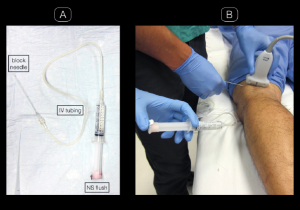

The challenge of reducing NOx emissions to 80% below IMO Tier I requirements was met by Rolls-Royce without undermining power output or significantly increasing specific fuel consumption levels.

Placing fluid blocks in the world 1.12 series#
Turbocharging system: multipulse converter system based on ABB TPL series turbochargers easily removable insulation panels for inspection and maintenance.Ĭlean Design versions of the B32:40 engine were introduced for operators keen to minimize the environmental impact of their tonnage, the first B32:40V12P models to this specification being delivered in mid-2006 for offshore vessel projects. Piston: improved oil-cooled two-piece design two compression rings and one oil scraper ring, all chromium plated.įuel injection system: pumps designed for 2000 bar injection pressure totally enclosed in the heat-insulated compartment constant pressure unloading for cavitation-free operation at all loads and speeds. The main bearing bolts are hydraulically tightened.Ĭylinder liner: centrifugally cast, bore-cooled design with a running surface treated to improve wear resistance a carbon-cutting ring is incorporated at the top of the liner.Ĭylinder head: bore-cooled flame plate six hydraulically tightened securing bolts to ensure even distribution new cooled exhaust valve seat.Ĭrankshaft: continuous grain flow forged large diameter journals and pins hydraulically tightened counterweight bolts.Ĭonnecting rod: forged of alloy steel and fully machined obliquely split and serrated big end hydraulically tightened big end bolts.īearings: steel backed with Sn/Al bearing material. B32:40 detailsĬylinder block: one-piece nodular cast-iron design of the rigid structure with an underslung crankshaft, cast-in charge air manifold, and large crankcase doors. Improved reliability and maintainability were promised by a new pump-end module and turbocharger support structure. These changes contributed to specific fuel consumption of 183 g/kW h at the rated speed of 750 rev/min and NOx emissions under the IMO limit.

A new fuel injection system provided both an increase in capacity and a higher injection pressure. The cylinder head design and material specification were refined to allow a small rise in the maximum combustion pressure and to handle the greater combustion air throughput from the upgraded turbocharging system. Modified cylinder liners sought good control over temperatures at all points, and the piston/ring designs were also changed to minimize lube oil consumption and cylinder wear. The B32:40 was initially offered in six-, eight-, and nine-in-line and V12-cylinder configurations to span a power band from 3000 to 6000 kW outputs up to 9000 were planned by extending the V-cylinder programme.Ī new crankshaft design was incorporated to achieve the longer stroke and provide increased bearing areas, with new bearing technology addressing the larger bearing loads. Production engines became available in the year 2000, supplementing the standard B-series in the programme. The B-series benefited from another rejuvenation in the shape of the longer stroke (400 mm) B32:40 design, offering an output of 500 kW/cylinder at 750 rev/min with a mean effective pressure of 24.9 bar. Malcolm Latarche, in Pounder's Marine Diesel Engines and Gas Turbines (Tenth Edition), 2021 B32:40 engine


 0 kommentar(er)
0 kommentar(er)
